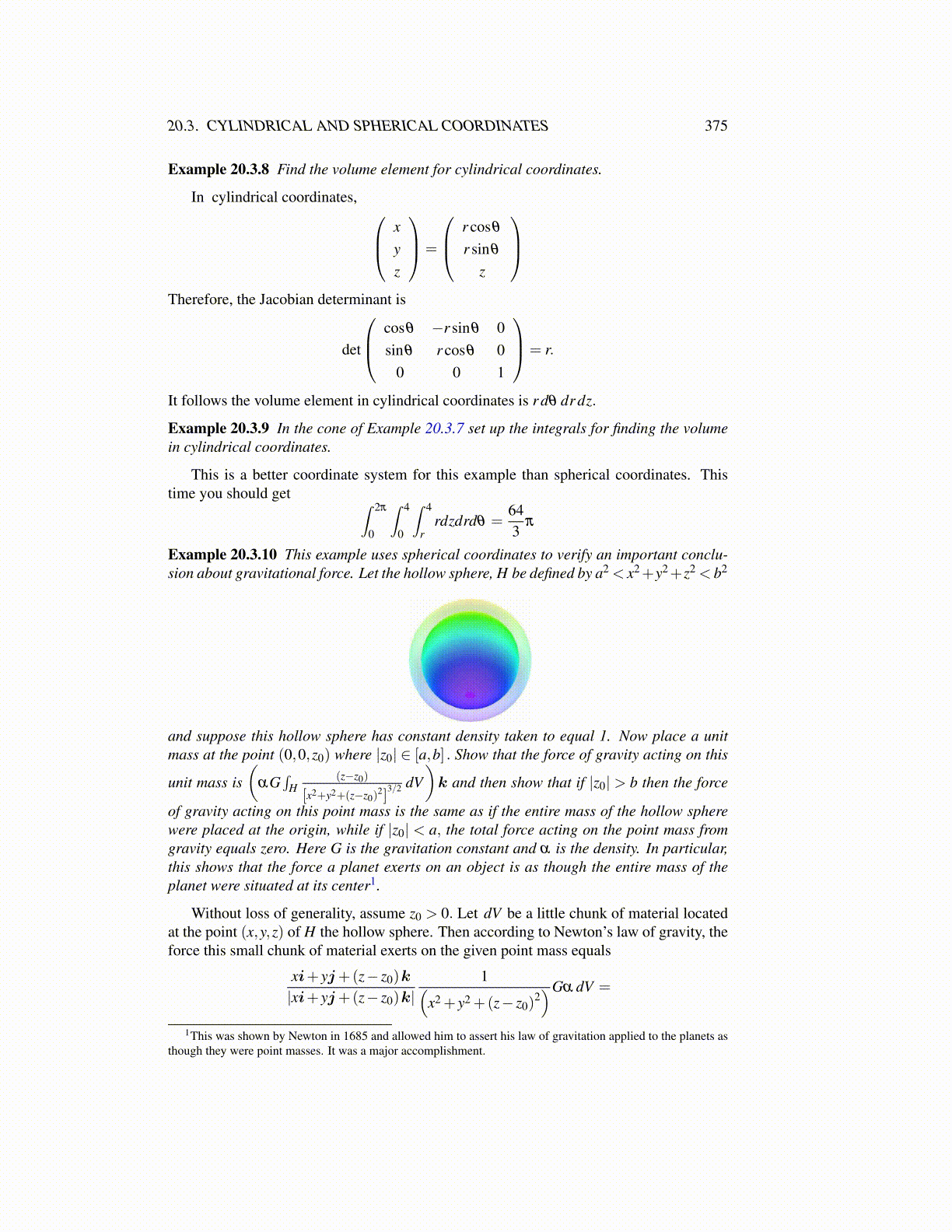
20.3. CYLINDRICAL AND SPHERICAL COORDINATES 375
Example 20.3.8 Find the volume element for cylindrical coordinates.
In cylindrical coordinates, xyz
=
r cosθ
r sinθ
z
Therefore, the Jacobian determinant is
det
cosθ −r sinθ 0sinθ r cosθ 0
0 0 1
= r.
It follows the volume element in cylindrical coordinates is r dθ dr dz.
Example 20.3.9 In the cone of Example 20.3.7 set up the integrals for finding the volumein cylindrical coordinates.
This is a better coordinate system for this example than spherical coordinates. Thistime you should get ∫ 2π
0
∫ 4
0
∫ 4
rrdzdrdθ =
643
π
Example 20.3.10 This example uses spherical coordinates to verify an important conclu-sion about gravitational force. Let the hollow sphere, H be defined by a2 < x2+y2+z2 < b2
and suppose this hollow sphere has constant density taken to equal 1. Now place a unitmass at the point (0,0,z0) where |z0| ∈ [a,b] . Show that the force of gravity acting on this
unit mass is(
αG∫
H(z−z0)
[x2+y2+(z−z0)2]
3/2 dV)k and then show that if |z0| > b then the force
of gravity acting on this point mass is the same as if the entire mass of the hollow spherewere placed at the origin, while if |z0| < a, the total force acting on the point mass fromgravity equals zero. Here G is the gravitation constant and α is the density. In particular,this shows that the force a planet exerts on an object is as though the entire mass of theplanet were situated at its center1.
Without loss of generality, assume z0 > 0. Let dV be a little chunk of material locatedat the point (x,y,z) of H the hollow sphere. Then according to Newton’s law of gravity, theforce this small chunk of material exerts on the given point mass equals
xi+ yj+(z− z0)k
|xi+ yj+(z− z0)k|1(
x2 + y2 +(z− z0)2)Gα dV =
1This was shown by Newton in 1685 and allowed him to assert his law of gravitation applied to the planets asthough they were point masses. It was a major accomplishment.